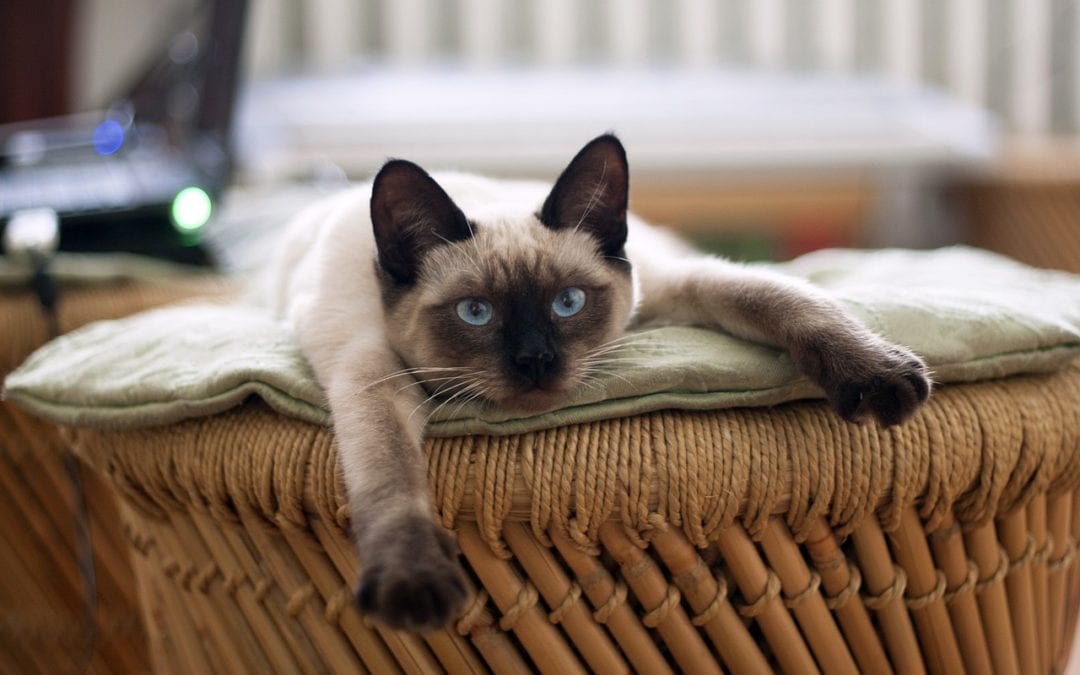It should surprise no one that cats don’t make it to the veterinarian’s office as often as dogs do. Dogs, for all their size and potential rambunctiousness, are generally willing to walk on a leash (or be carried) into the veterinarian’s as often as their people like. Cats, on the other hand, have a way of digging their claws in and mounting extreme efforts of opposition when it comes to leaving their territory for any reason, much less a vet visit.
To make matters worse, cat owners are sensitive to their cats’ desires. They worry that their cats will hold any transgression against them – especially a vet visit.
Add the two scenarios together and it makes sense that cat people might need whatever inducements we veterinarians can conjure to get them to see us. Not that cat keepers don’t have other reasons.
Here are a few:
1. Cats know how to hide pain and illness.
Cats have retained their wildness more than any other domesticated species, particularly with respect to hiding pain and illness. Think about it: If you’re a wild animal, you wouldn’t want others knowing you’re weak and vulnerable. So your body does this thing with its hormones to keep pain, nausea, and other evidence of disease under control. Trouble is, if the illness persists it becomes a life-threatening liability.
Cat owners, therefore, are counseled to keep a close eye on their pets for the first signs of disease, as even a few days can make a difference. How much better would it be, though, if your veterinarian could identify physical problems ahead of time? Aside from gaining valuable time in treatment, it may prevent your cat from ever feeling the illness that’s creeping in.
2. Nutritional guidance is typically necessary.
The epidemic of feline obesity in the U.S. makes it clear that nutritional guidance is mandatory for most cat owners. Counseling owners on specific solutions to these issues is essential to getting cats to lose the weight and get back on track.
Since cats are carnivorous and their requirements are so different from ours, plenty of nutritional issues may need to be addressed at the same time. For example, older cats have trouble maintaining muscle mass, very young cats have specific dietary needs, and cats of certain breeds may have additional requirements due to their susceptibility to certain diseases.
Not only is a physical examination helpful in identifying nutrition-based disorders, ancillary issues like osteoarthritis and skin disease may benefit from nutraceuticals. Your veterinarian is highly adept at making specific recommendations along these lines too.
3. Oral examinations are indispensable.
How often do you get a good look inside your cat’s mouth? Since so many very common disorders are evident only by examining the mouth (dehydration, anemia, clotting disorders, periodontal disease, oral cancers, etc.), routine oral examinations are considered indispensable.
4. Feline behavior counseling improves our cats’ quality of life.
A cat’s emotional health can be a hard thing to ascertain, much more so in a clinical setting. It’s also true that cat people have a hard time interpreting feline behavior at home. When veterinarians get a chance to weigh in, cats’ inner emotional lives are often revealed, which can only be a good thing when it comes to offering them what they need to be happy.
5. Proactive care is less expensive than reactive care.
It’s obvious that preventing disease is more humane than allowing one to happen, but it’s also true that preventing disease is typically more cost effective. Vaccines against common infectious diseases are the most obvious example, but there’s a long list of diseases we can prevent by helping pet people make good decisions about their cats’ lifestyles and implement proactive at-home routines.
6. Cats age more rapidly than humans do.
Why every year? Because bringing your cat in annually is, on average, like you seeing your doctor every five years – which is not a lot when you think of it that way.
If those reasons aren’t enough to get you to bring your cat to the vet, no National Bring Your Cat to the Vet Day is going to help. In which case, we urge you to consider that house calls are a perfectly acceptable alternative in most cases. Ambulatory and mobile services that specifically target underserved cat owners are increasingly available across the U.S.
However you can, just be sure your cat is seeing a veterinarian once a year. For all the joy they bring you, it’s the least you can do.
While you can’t predict when your pet is going to get sick or injured, you can protect yourself from expensive veterinary bills. Embrace Pet Insurance gives you the freedom to do what’s best for your pet without stressing over the cost. Easily personalize your coverage to fit your budget and your pet’s needs, then visit any vet for nose-to-tail coverage. Check out what the Embrace plan covers or compare pet insurance providers to learn more.
https://www.embracepetinsurance.com/waterbowl/article/reasons-we-need-take-your-cat-to-the-vet-day

